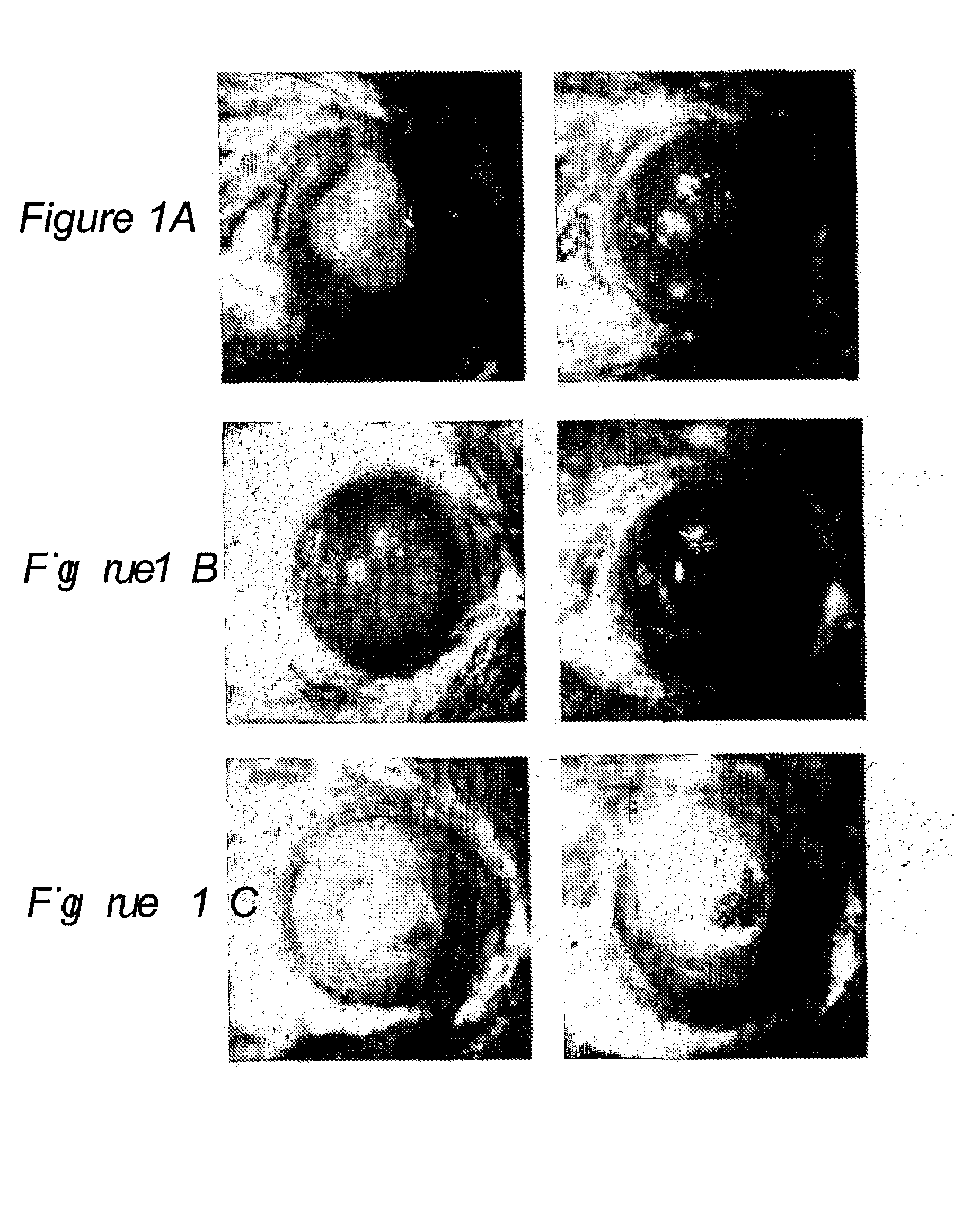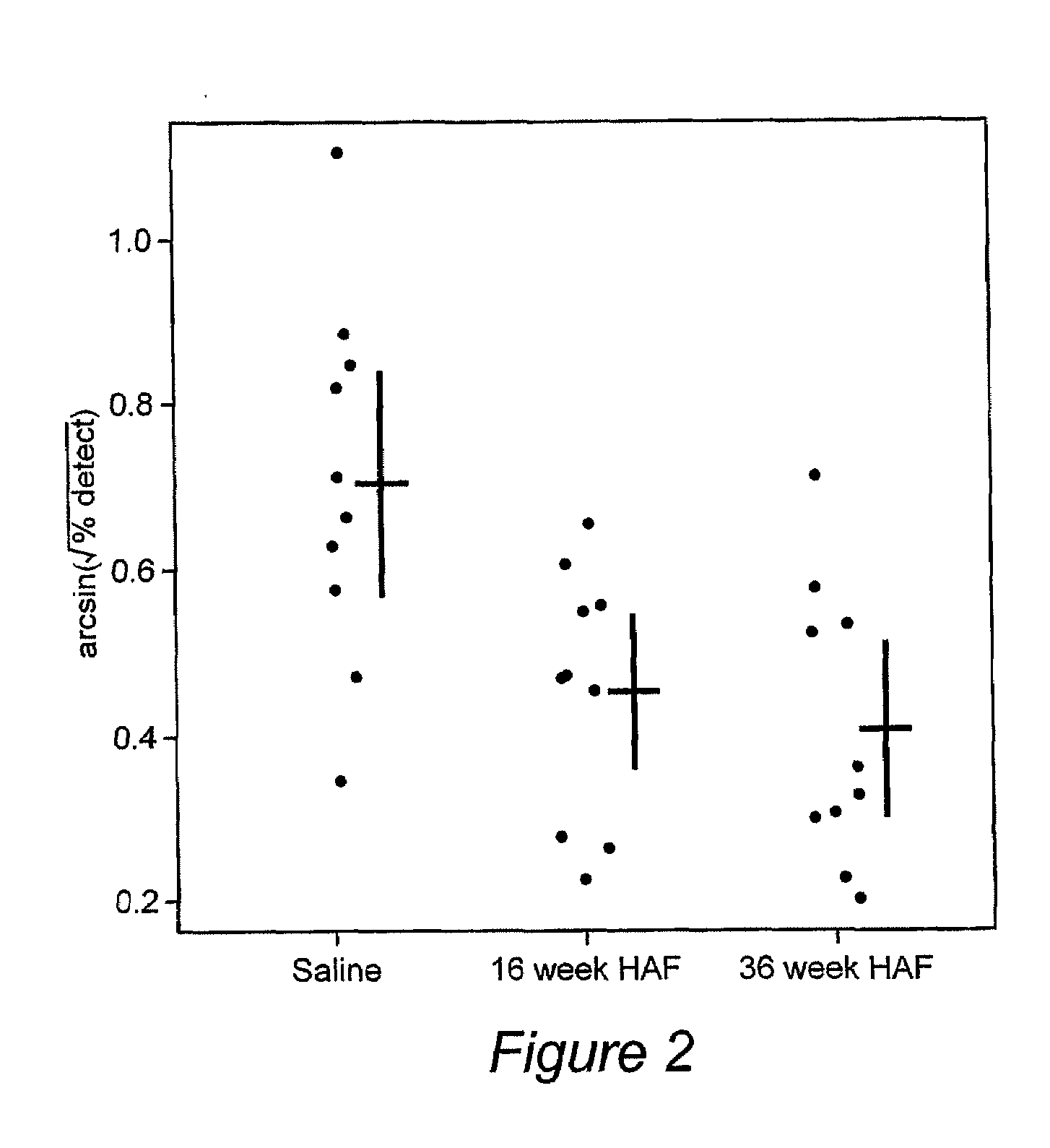Use of Amniotic Fluid (Af) in Treating Ocular Disease and Injury
a technology of amniotic fluid and ocular disease, applied in the field of treating ocular disease and injury, can solve the problems of only partial success, severe debilitating eye diseases and injuries, and impaired vision, so as to avoid surgical procedures, improve treatment effect, and prolong the effect of beneficial factors
- Summary
- Abstract
- Description
- Claims
- Application Information
AI Technical Summary
Benefits of technology
Problems solved by technology
Method used
Image
Examples
example 1
REFERENCES FOR EXAMPLE 1
[0070]1. Dua H S, Gomes J A, King A J, Maharajan V S. The amniotic membrane in opthalmology. Surv Ophthahnol 2004; 49:51-77.[0071]2. Ucakhan O O , Koklu G, Firat E. Non-preserved human amniotic membrane transplantation in acute and chronic chemical eye injuries. Cornea 2002; 21:169-172.[0072]3. Meller D, Pires R T F, Mack R J S, et al. Amniotic membrane transplantation for acute chemical or thermal burns. Opthalmology 2000; 107:980-990.[0073]4. Katircioglu Y A, Budak K, Salvarli S, Duman S. Amniotic membrane transplantation to reconstruct the conjunctival surface in cases of chemical burn. Jpn J Opthalmol 2003; 47:519-522.[0074]5. Kobayashi A, Shirao Y, Yoshita T, et al. Temporary amniotic membrane patching for acute chemical burns. Eye 2003; 17:149-158.[0075]6. Yeh L K, Chen W L, Li W, Espana E M, Ouyang J, Kawakita T, Kao W W, Tseng S C, Liu C Y. Soluble lumican glycoprotein purified from human amniotic membrane promotes corneal epithelial wound healing. In...
example 2
REFERENCES FOR EXAMPLE 2
[0133]1. Dua H S, Gomes J A, King A J, Maharajan V S. The amniotic membrane in opthalmology. Surv Opthalmol 2004; 49:51-77.[0134]2. Shao C, Sima J, Zhang S X, Jin J, Reinach P, Wang Z, Ma J X. Suppression of corneal neovascularization by PEDF release from human amniotic membranes. Invest Opthalmol Vis Sci 2004; 45:1758-1762.[0135]3. Kenyon B M, Voest E E, Chen C C, Flynn E, Folkman J, D'Amato R J. A model of Angiogenesis in the Mouse Cornea. Invest Ophthalnol Vis Sci 1996; 37:1625-1632.[0136]4. Kenyon B M, Browne F, D'Amato R J. Effects of Thalidomide and Related Metabolites in a Mouse Corneal Model of Neovascularization. Exp Eye Res 1997; 64:971-978.[0137]5. Dawson D W, Volpert O V, Gillis P, et al. Pigment Epithelium-Derived Factor: A Potent Inhibitor of Angiogenesis. Science 1999; 285:245-248
example 3
Treatment of Dry Eye Syndrome with Human Amniotic Fluid
Clinical Results
[0138]One patient was enrolled in a clinical protocol in Caracas, Venezuela, with a diagnosis of severe dry eye due to a medical condition named Sjögren's Syndrome. This is a chronic condition associated with dry eye and dry mouth.
[0139]This particular patient has been treated in the past with several medications for dry eye, without much success. The patient has a long list of topical medications that have been attempted, with transient / minimal improvement over the years. The frequency of lubricant eye drops has been used by some clinicians as an indicator of disease severity and, at the same time, as a predictor of clinical success of therapy.
[0140]The patient started treatment with topical human amniotic fluid (after appropriate serology and sterility conditions of preparation) and after one week, the subjective and objective improvement was impressive. The drops were very well tolerated, no adverse reactions ...
PUM
 Login to View More
Login to View More Abstract
Description
Claims
Application Information
 Login to View More
Login to View More - R&D
- Intellectual Property
- Life Sciences
- Materials
- Tech Scout
- Unparalleled Data Quality
- Higher Quality Content
- 60% Fewer Hallucinations
Browse by: Latest US Patents, China's latest patents, Technical Efficacy Thesaurus, Application Domain, Technology Topic, Popular Technical Reports.
© 2025 PatSnap. All rights reserved.Legal|Privacy policy|Modern Slavery Act Transparency Statement|Sitemap|About US| Contact US: help@patsnap.com



